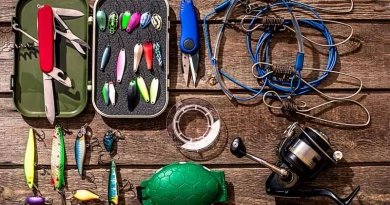
What Is The 333 Rule For Survival?
The day was winding down as I trekked deeper into the wilderness, the forest canopy above filtering the last rays of sunlight. It was here, amid the serenity of nature, that I began to ponder the “333 Rule for Survival,” a crucial concept for anyone venturing into the wild.
The question at hand is: “What is the 333 Rule for Survival?” This rule is a fundamental guideline that helps prioritize survival actions in life-threatening situations. It is crucial because it provides a simple, easy-to-remember framework that can be the difference between life and death when you’re faced with the harsh realities of nature.
Understanding the 333 Rule for Survival involves breaking down its components and recognizing the challenges each aspect presents.
3 Minutes Without Air
The first and most immediate priority is air. In situations where breathing is compromised, such as being underwater or in a smoke-filled environment, the human body can only survive for about three minutes without oxygen. The obstacle here is the immediate danger and the need for quick, decisive action to secure an airway.
3 Hours Without Shelter
Next is shelter. In extreme conditions—whether it’s the freezing cold, scorching heat, or a torrential downpour—a person can only survive for about three hours without adequate shelter. Hypothermia and heatstroke are real threats, making it essential to find or create shelter promptly. The challenge is often the availability of materials and the time it takes to build a suitable shelter.
3 Days Without Water
Water is the next critical need. The human body can typically survive for about three days without water. Dehydration can quickly impair cognitive and physical functions, making it vital to locate and purify water as soon as possible. The obstacles include finding a clean water source and having the means to make it safe for consumption.
3 Weeks Without Food
Food, while necessary for energy and nutrition, is less immediately critical. Humans can survive for about three weeks without food. However, a lack of food over an extended period can lead to severe weakness and health issues. The challenge here is not only finding food but also ensuring it is safe and nutritious.
Presenting the Best Solution and Implementation
Understanding these priorities is one thing; implementing them effectively in a survival situation is another. Here’s how to tackle each component of the 333 Rule for Survival.
Securing Air
In situations where your airway is threatened:
- Stay Calm: Panic can exacerbate the situation, causing you to waste precious oxygen.
- Act Quickly: Remove yourself from the immediate danger, such as escaping a smoke-filled area or surfacing from underwater, as swiftly and safely as possible.
- First Aid Knowledge: Basic knowledge of CPR and other first aid techniques can be crucial in assisting someone who is struggling to breathe.
Finding Shelter
Shelter is crucial in extreme conditions:
- Use Available Materials: Natural materials like branches, leaves, or snow can be used to construct a makeshift shelter.
- Carry a Tarp or Emergency Blanket: These lightweight items can provide immediate shelter from the elements.
- Clothing: Dress in layers to help regulate body temperature and protect yourself from the elements.
Locating Water
Water is essential:
- Identify Water Sources: Streams, rivers, and rainwater are potential sources.
- Purify Water: Boiling water, using purification tablets, or using filters can make water safe to drink.
- Conserve Water: Avoid unnecessary exertion to reduce water loss through sweat.
Finding Food
Food becomes critical over longer periods:
- Foraging: Knowledge of edible plants and berries can be lifesaving.
- Hunting and Fishing: Skills in trapping, fishing, and hunting can provide necessary nutrition.
- Emergency Rations: Carrying high-calorie emergency rations can sustain you until you find a more stable food source.
Resources and Tools Needed
To implement these strategies effectively, certain tools and resources are invaluable:
- First Aid Kit: for treating injuries and ensuring airway management.
- Tarp or Emergency Blanket: For immediate shelter.
- Water Purification Tablets or Filters: To make water safe for drinking.
- Fire-Starting Kit: For warmth, cooking, and signaling for help.
- Knife or Multi-Tool: Useful for building shelters, preparing food, and other survival tasks.
- Survival Guide: A manual with tips and techniques for various survival scenarios.
Conclusion
As the night settled in, the stars appeared one by one, I reflected on the simplicity and power of the 333 Rule for Survival. This rule serves as a critical guideline, prioritizing air, shelter, water, and food in a manner that is easy to remember even in the most stressful situations. By understanding and applying this rule, you can significantly increase your chances of surviving in the wilderness.
Survival is not just about knowledge but also about preparation and mindset. Carrying the right tools, maintaining a positive attitude, and being ready to adapt to changing circumstances are all crucial components. The wilderness, with its beauty and danger, demands respect and readiness, and the 333 Rule for Survival is a testament to the power of simplicity in ensuring that you come out of it alive and well.
By prioritizing air, shelter, water, and food, and being prepared with the right tools and knowledge, you can navigate the challenges of the wild and increase your chances of survival significantly. The key is to remain calm, stay focused, and remember the 333 Rule, a lifeline in the vast and unpredictable wilderness.






